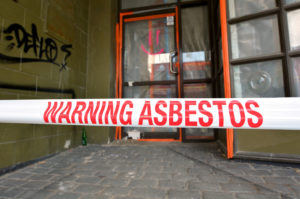
What Is Asbestos and How Did It Get into Our Homes?
Asbestos testing is serious business (which is not to say that volatile organic testing or mold inspections aren’t). Asbestos has been linked to cancer. Its use has been banned in more than 50 countries. In the United States, it is strictly regulated, but, as long as it accounts for less than 1% of the product, it is still being used in a large number of consumer products.
Mesothelioma is a type of cancer that affects the mesothelium, which is a thin layer of tissue covering almost all of your internal organs. The most common form of mesothelioma is pleural mesothelioma, which affects the lungs and can cause shortness of breath and pain when coughing, among a number of other symptoms. There is no cure.
What Is Asbestos?
Asbestos is a mineral that can be found in nature. It became popular in manufacturing because of its heat-resistant properties. And, because asbestos was cheap, it was widely used, not only in manufacturing but also in heavy industry and things like construction and shipbuilding.
According to the Mesothelioma Center, “For most of the 20th century, asbestos was a primary component in almost all types of insulation. No device was too big to insulate with asbestos — or too small.”
How Did Asbestos Get into Our Homes?
“Historically, most asbestos exposure has occurred on the job. Asbestos miners and factory workers who handled raw asbestos on a regular basis have suffered the worst health consequences,” the Mesothelioma Center says. “However, asbestos-containing consumer products have extended the risk of exposure to people from all walks of life.”
Here in the United States, we love our gadgets, right? Well, following World War II, when more and more of those gadgets were coming to market, asbestos was being used for insulation. As long as the products that contained asbestos remained intact, there was no concern, but if they were damaged or broken, the risk of contamination was there.
Some of the many products that contained asbestos insulation included:
- Ovens and stoves
- Toasters
- Coffee pots
- Baby bottle warmers
- Popcorn poppers
- Dishwashers
- Washing machines and dryers
- Ironing boards
- Curling irons
- And get this, according to the Mesothelioma Center, “Fluffed chrysotile — commonly known as white asbestos — was once sold as fake snow for Christmas decorations.”
If you think your home or workplace might be in need of an asbestos inspection, please don’t delay. Contact our environmental testing experts – or another qualified asbestos testing company – with your questions and concerns as soon as possible.







